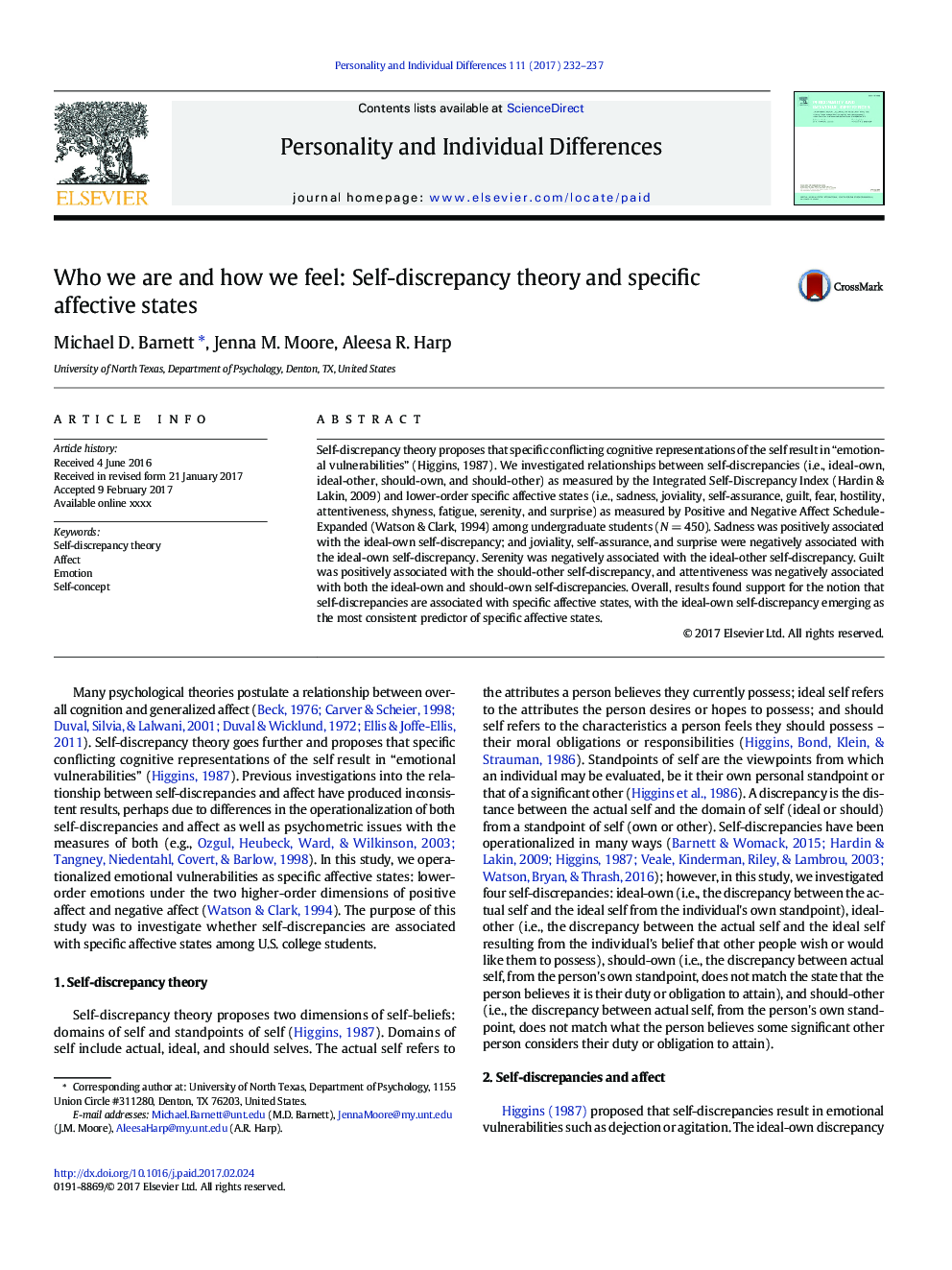| کد مقاله | کد نشریه | سال انتشار | مقاله انگلیسی | نسخه تمام متن |
|---|---|---|---|---|
| 5035945 | 1472007 | 2017 | 6 صفحه PDF | دانلود رایگان |
عنوان انگلیسی مقاله ISI
Who we are and how we feel: Self-discrepancy theory and specific affective states
ترجمه فارسی عنوان
چه کسی هستیم و چگونه احساس می کنیم: نظریه خودمحور و حالت های عاطفی خاص
دانلود مقاله + سفارش ترجمه
دانلود مقاله ISI انگلیسی
رایگان برای ایرانیان
کلمات کلیدی
تئوری خودمسنجی، تاثیر می گذارد، هیجانی، خودپنداره،
موضوعات مرتبط
علوم زیستی و بیوفناوری
علم عصب شناسی
علوم اعصاب رفتاری
چکیده انگلیسی
Self-discrepancy theory proposes that specific conflicting cognitive representations of the self result in “emotional vulnerabilities” (Higgins, 1987). We investigated relationships between self-discrepancies (i.e., ideal-own, ideal-other, should-own, and should-other) as measured by the Integrated Self-Discrepancy Index (Hardin & Lakin, 2009) and lower-order specific affective states (i.e., sadness, joviality, self-assurance, guilt, fear, hostility, attentiveness, shyness, fatigue, serenity, and surprise) as measured by Positive and Negative Affect Schedule-Expanded (Watson & Clark, 1994) among undergraduate students (NÂ =Â 450). Sadness was positively associated with the ideal-own self-discrepancy; and joviality, self-assurance, and surprise were negatively associated with the ideal-own self-discrepancy. Serenity was negatively associated with the ideal-other self-discrepancy. Guilt was positively associated with the should-other self-discrepancy, and attentiveness was negatively associated with both the ideal-own and should-own self-discrepancies. Overall, results found support for the notion that self-discrepancies are associated with specific affective states, with the ideal-own self-discrepancy emerging as the most consistent predictor of specific affective states.
ناشر
Database: Elsevier - ScienceDirect (ساینس دایرکت)
Journal: Personality and Individual Differences - Volume 111, 1 June 2017, Pages 232-237
Journal: Personality and Individual Differences - Volume 111, 1 June 2017, Pages 232-237
نویسندگان
Michael D. Barnett, Jenna M. Moore, Aleesa R. Harp,
